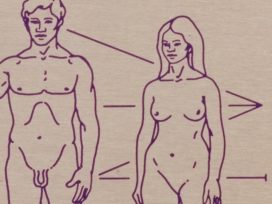Only two decades ago nannies, domestic servants and elder care companions were considered the remnants of high bourgeois life in many countries of Europe. But by the 1990s the demand for domestic cleaners had begun to increase, and by the turn of the century this had extended to home-based carers for young children and older people. The new employers include not only the wealthy but also many professional and dual-earning households; and it is migrant women from the poorer regions, often educated and skilled, who are meeting this demand.
This phenomenon, often referred to as “the global care chain”, is more marked in some European countries than others. For example in Italy in 2006 the number of registered migrant care workers was over 400,000 (three times as many as only four years earlier), and migrant workers constituted over 70 per cent of all home-based care workers. However, increasing growth in numbers of migrant workers in the health and care sectors, whether home-based or institutional, is a feature of most of western, southern and northern Europe. In the UK by 2008 18 per cent of care workers, 19 per cent of childminders and related workers, and 23 per cent of nurses were foreign born (and these figures do not in general include the many who are working without papers or unregistered).
Migrant care workers make tracks both across and within the global South and North. Domestic workers from Malaysia go to Indonesia, while Indonesian women find work in Singapore and in Saudi Arabia, which also provides work for women from the Philippines and Sri Lanka. Within the North, the enlargement of the European Union since 2004 has seen an increase in the numbers of educated younger women migrants from Central and Eastern Europe who find care and domestic work in the rest of Europe, in the hope that this will be a stepping stone to more professional work. These migration trails transect older tracks from colonial relations – Ethiopians to Italy, Indian and African workers to the UK, South American workers to Spain – as well as ties of religion – for example Catholicism connects the Philippines with Italy and Spain.
The demand and supply of migrant care workers draw together three major social changes of our time. The first of these is the global increase in women’s involvement in the labour market. This has been characterised in European welfare states by a move from the “male-breadwinner’ model of family life towards an “adult worker” model which assumes that all able-bodied adults – men and women – will be in paid work. In the poorer regions of the world, women’s greater breadwinning role has been forced by the destruction of local economies, unemployment and poverty, frequently combined with the lack of any form of state support; including in post-communist countries, where welfare retrenchment has undermined previous provision.
The second major development is that in the richer regions the expansion of women’s employment has meant that care has become a central social, political, and economic concern. How can responsibilities for work and care be reconciled when women are employed? How can care be paid for? These questions are intensified by an ageing society and concerns about declining fertility. The policy solutions that states have found to resolve these questions have, as I shall show, played an important role in creating a low paid migrant care workforce – both directly and indirectly.
The third development is the changing nature of post-colonial migration, and of national and supranational boundaries, which has seen the increased movement of women seeking earning opportunities to support themselves and their families. In their turn this has given rise to issues that define and delimit these opportunities – documentation, citizenship rights and the use of unregulated labour.
Women globally are taking on more responsibilities to earn income, but without a significant rebalancing of their care costs and responsibilities – whether through the support of states, fathers or workplaces; and this has given rise to a geopolitically uneven solution to women’s attempts to reconcile their dual responsibilities: the transnational movement of mainly women into care and domestic work. While this represents a new dimension of inequality, it nevertheless superimposes itself on earlier patterns in welfare politics. In the 1950s and 1960s in Britain, the recruitment of health and care labour from the colonies provided cheap labour for the new institutions of the welfare state, and at the same time met a labour shortage that otherwise would have had to be filled by married women. Migrant workers thus helped to avoid a disruption to the strong ideology of a male breadwinner society, in which (white British) women were assumed to have primary responsibilities to the home and children. This is in many ways paralleled today, in that the use of migrant domestic and care labour prevents the disruption of the new “adult worker” model of welfare, where women are encouraged into paid employment. Then and today these were cost-effective ways of securing family norms and meeting care needs, even though these norms and needs have changed. Then and today the social relations and citizenship rights caught up in this labour were inscribed with gendered and racialised inequalities.
A second continuity in welfare politics is that the current shortage of care labour continues to reflect the poor wages and conditions in the sector. And this in turn indicates – in spite of an apparent current focus of political concern – the continuing lack of recognition of the value of care in society.
The dovetailing of care policies and migration
There have been two parallel movements in policies for the care of younger, older and disabled people in Europe. Influenced by EU policies around work/life balance, there has been a growing acceptance of child and elder care as a public and not simply an individual private responsibility. At the same time, the way these policies have developed in many countries has seen a shift from providing public care services to giving individuals cash payments to buy in home-based care (in some countries, especially in Southern Europe, cash payments have been introduced in the context of previous provision of very few services). The UK, Spain, Finland and France have all introduced some form of cash provision or tax credit to assist in buying child care help in the home, and Sweden has introduced tax breaks for people employing domestic help in the home. Forms of “direct payments” allow older people or disabled people to buy in support and assistance in – for example – the UK, Netherlands, Italy and Austria. Support for these payments has been based on the idea that service users should have greater control and independence. But at the same time, both these types of provision have encouraged the development of a particular form of care or domestic help – home-based, often low-paid, commodified, and generally accessed privately through the market. In other words, although the payments come from the state, it is often in the private market that people will find their care providers.
In countries where care labour has historically been undervalued and underpaid, it is generally performed by those with least negotiating power, and this is where migrant labour steps in. Furthermore, in the formal and institutional care sector, parallel developments of contracting out to private agencies and companies have seen a worsening of pay and conditions. In the UK, for example, contracting out has been accompanied by recruitment campaigns aimed at nurses from India and the Philippines, for nursing work in both the health service and private sector.
In the context of complex migration rules, and the increasingly fewer rights accorded to low skilled migrant workers, home-based work is an area that is more open to newly arrived migrant women workers (though, increasingly, male migrants also work in this area). In countries where workers often have to wait to receive their official papers, working as a live-in domestic cleaner or carer can be the best option, even though it is an option open to exploitation. Take the example of Spain and child care. Since the mid-1990s the employment of women has risen steeply, so that by 2009 their activity rate was 41.7 per cent. But this has happened in a context of little child care provision. Subsequently working mothers were given a small subsidy to help them buy in child care, and immigration policies developed quota allocations for domestic/care workers. This, combined with the regularisation of over half a million illegal immigrants since 2002, has led to a general acceptance of the employment of migrant women from Latin America, North Africa, the Philippines and lately Eastern Europe (Romania and Lithuania) to fill the child and elder care deficit. Employing home-based domestic and care help is now a strategy used by a range of working women – from office workers to professionals – to enable them to stay in the labour market. However, the dynamics of migration law feed into the vulnerability of these workers. In Spain it is cheaper to hire a live-in newly-arrived migrant woman waiting for her settlement papers, because employers can avoid paying social security, and the insecurity ties the worker more closely to her employer.
The relationship between care and migration is also shaped by policies that position mothers as individual consumers, choosing the right care for their children according to their care preferences, and this is particularly marked in countries where the private market dominates choices for childcare. These policies can be seen as part of a process that legitimises the commodification of care. In Madrid mothers felt it was their individual responsibility to find childcare in the private market. In Britain, searching for value for money is what mothers find themselves doing in a marketised childcare economy. One working mother employing an au pair in London said, “an au pair was what we could afford. We had a spare room and the money was what we can afford, because nannies are incredibly expensive if you pay them properly”. The nub of the issue here is “proper” remuneration for care work, and how that is achieved.
This legitimisation of consumerism in a child care market also works in tandem with particular child care cultures: what Spanish and British employers of home-based care share is a cultural preference for mother substitute care, which predisposes them to au pairs, nannies and domestic helps (or in the case of older people, substitute family care). These cultures are not necessarily national, however, but can also be based in particular social groups with particular care cultures. In Britain, these were middle-class professional mothers who believed that mother substitute care was best. In Stockholm we found that the employment of private home-based child care was particular to the upper middle class, or women who work in traditionally “male” jobs.
However, the research in Sweden also suggested that there has been an increase in a wider section of the population in the “hidden” use of domestic workers, and that many of these workers came from Eastern Europe and Baltic countries. In 2006 the conservative Swedish government granted tax breaks for people employing domestic cleaners, with the intention of regularising the grey market in this area. But, interestingly, its justification was also in terms of ensuring greater “gender equality” for Swedish working mothers. Prime Minister Reinfeldt was reported as saying, “in a gender equality society like Sweden, where the vast majority of women hold jobs, families sometimes need to hire home help”. The point here is not only that one must ask “whose equality, exactly?”, but that even in countries where state care provision is more substantial than elsewhere, the search goes on for cheaper solutions, in the private market, to unresolved work/life balance issues.
The shaping of everyday experiences
All these structural and policy factors frame the relations between those who employ a carer in their home and migrant women who take on this work.
Employers and employees who have children all share the same problem of how to balance their care and work responsibilities. But the employee, in exercising her rights to mobility to seek work, may at the same time be forfeiting her own and her children’s rights to family reunion, and the opportunity to see her children grow up. At the same time, the nature of her work – where the employer’s home is the workplace, and where her duties of care are those associated with close and affective relationships – makes the worker particularly open to exploitation, because of the blurring of informal obligations to care and contractual rights. And “being part of the family” creates problems on both sides. In our research we found employers viewed this in terms of the boundaries of their privacy. As one London employer said:
There’s this thing that “they should be part of your family” but they’re not. But you can’t treat them as an employee. I treat them as friends, but expect them not to be hanging around. One came in watching TV with me in the evening. That’s my private time. However, employees saw this differently: they felt that the lack of boundaries around their work meant they were continually “on call”, and too easily persuaded to overstep agreed working hours or responsibilities. Being considered a “friend” was sometimes demeaning in the context of unequal power relations. Migration status – for example, where a worker is waiting for a visa, or where she has no recourse to public funds – makes her dependent upon an individual employer, rather than being able to sell her labour freely. In addition, home-based work isolates the worker, makes the work invisible, and renders difficult forms of collective mobilisation for rights.
Exercising work rights is made more difficult by the many differences in the way people are employed. Employees may provide housework or child care or both; they may live in or live out; they may work a few or very long hours; they may be qualified yet designated as “unskilled”; they may be a carer, cleaner or personal assistant for an older, frail person or someone who is disabled; they may be self-employed, or “undeclared”, or work for a private agency or local authority. As migrant workers, they may be working under a special permit or they may be undocumented. Furthermore, these differences are overlaid with the racialised, ethnic or national stereotypes that permeate the employment of these workers, which give them greater or lesser access to different types of work and payments. We found this in the three countries in our research. Racialised stereotypes operate differently as hierarchies in different countries. In the UK, some employers deem Latin Americans to be more loving and Eastern Europeans more hard working, while Australians are seen as cheerful and flexible. In Spain, Latin Americans are considered slow and Moroccans untrustworthy. Philippinas are often most preferred as carers in Europe. In France, black African workers are considered “dirty” and Maghreb workers “sly”. In Paris, Haitian women are favoured; in Greece, Albanians are not. Such racialised hierarchies point to a complex interrelationship between the gendered gradations of care work and colonial histories, past and contemporary religious antagonisms, and essentialist stereotypes that are based on gender, nationality and ethnicity. This hierarchy can also be influenced by how well the worker speaks the language of the country in which she works, and the assumed compatibility of her nationality with that of her employer. This is illustrated by a Slovakian au pair in London:
my friend was working for a family, she was from Slovakia, and she was getting quite good money, she had about £60 a week [this was in 2004]. She worked about 30 hours or something like that, babysit twice a week. She asked me if I knew someone who could exchange with her, and I knew about a girl who was looking for a job, but she was from Thailand; she was a lovely girl, and I brought her there for an interview and this lady asked her to work 40 hours week, do four babysitting a week for £45. And I said, like are you kidding me? Is that just because that person’s from Thailand and that person was from Slovakia?
It is important, however, not to present migrant women simply as victims. The act of migration itself may involve a woman escaping a violent or difficult marriage; it may reflect aspirations to improve her own family situation through remittances sent home, or to move on to professional work for which she is qualified. Women’s remittances are important sources of support for the costs of care, education and health, especially if they are received also by women, although they also create significant hardship for those who send them. Migrating mothers often develop complex strategies to maintain daily internet communication with their children, even while the separation creates pain and longing on both sides. In other words, migrant women act in circumstances that are highly constrained and embedded in kin obligations.
At the more collective level, there are now organisations that defend the rights of migrant household workers – for example Kalayaan in the UK, and RESPECT, a European network which seeks to bring together NGOs, migrant workers’ organisations and trade unions. Organisations such as these pressured the International Labour Organisation in June 2010 to agree to consider adopting an international convention for the protection of the rights of domestic workers, including fair working standards and norms regarding social assistance and support.
Strategic issues
The growing trend towards the employment of migrant care workers to meet the care needs of richer countries points up a number of complex issues for politics and policy. One reason for this complexity is that it emerges out of the ways that different policy areas intersect. On the one hand, there are developments in care policies responding to increased demands, and attempts to reduce social expenditure. These include the development of market solutions to the provision of care services. Alongside these are developments in migration policy, which have involved the weakening of rights of so-called unskilled migrant workers. And this has also taken place in the context of the deregulation of the labour market, whereby migrant workers have found themselves outside of social protection or any eligibility for welfare benefits.
One of the problems at the heart of all this is the commodification of care in order to reduce its cost to social expenditure (in the name of “efficiency”). Public provision of care is necessarily expensive because it has no intrinsic productivity. So, when the market provides care, its costs can only rise as wages rise. And in order to make care affordable to individual employers, efficient to the state or profitable to private sector employers, care workers’ wages are always being forced down by strategies such as employing those with least bargaining power. Not only is this exploitative but it jeopardises good quality care. Furthermore, the Swedish situation shows that public provision of child care, whilst a far preferable solution, does not necessarily lead to a sharing of care and domestic work within the home, or the reconciliation of work and care. This is because the reconciliation of work and care responsibilities involves more than the provision of public care services. It is also about the sharing of care in the home and flexibility at work. Seeking an alternative solution by turning to the supply of care by low paid and often migrant workers simply gives rise to a different set of problems.
For migrant workers, crossing continents to earn money provides an important opportunity, but in the world in which they then find themselves, migration rules construct limited rights to social, economic, political and intimate citizenship – which are widely different from those of their employers. Furthermore these limitations mean that women are likely to enter the often unregulated world of domestic and care work in the home, in which conditions perpetuate the devaluation and invisibility of the private domain and its subservience to the public world. In addition, when home becomes work, and workers become “part of the family”, tensions and power relations ensue that are articulated in racialised stereotypes and hierarchies. This, then, is where the unequal relations of global interdependency become translated into the unequal relations of personal interdependency.
All this raises difficult dilemmas about the future of the so-called “adult worker” model across Europe, where men and women are expected to be involved in the labour market. In the short term, the urgent need is to regularise care and domestic work, and improve migrants’ rights of citizenship (including family reunion, rights to contracts, training etc). This must be accompanied by policies that ensure that migrant care workers are treated with respect, as citizens and as workers, and not simply as units of labour quotas, or as racialised others; and it also requires co-ordination across the different policy areas of migration, health and social care, employment and development. At the same time, a proper recognition of care means giving a social and economic value to care – for example in the remuneration received by care workers.
These short-term improvements would be underpinned by a political acceptance of the long-term social and economic value of investing in care provision: a recognition that the more people are supported the better they are enabled to provide care for others, and that this promotes social solidarity. Social solidarity enhances general well being, which in turn enhances productivity, mental and physical health and self sustainability. In these terms, investment in quality care is a productive investment. Instead of subsuming care support to economic competitiveness, we should be investing in good quality, affordable and accessible care as a social good essential to the well-being of society. The capacity to care should be as central to a notion of citizenship as the capacity to work.
However, such changes in attitudes and improvements in working conditions, whilst essential, are not sufficient. The reliance on the employment of migrant care workers as a cost effective strategy to growing care needs – whether by default or design – is part of a wider issue: the transnational political economy of care and the associated question of global justice.
The context of migration and care is one of unequal geo-political interdependence, where it is possible for welfare states of richer countries to solve the social and cost problems of their care deficits through the resources of poorer countries. However, this is more than just the exploitation of migrant labour in home-based care. It is part of a wider transnational political economy of care. The workforce of the European health, education and social services depends on skilled migrants. Half of those workers contributing to the expansion of the UK National Health Service in the early 2000s had qualified abroad. By the end of 2005, 30 per cent of its doctors and 10 per cent of its nurses had received their initial training overseas. In France a quarter of all hospital doctors are foreign or naturalised; in Germany nurses are recruited from Eastern Europe, and in Norway from Poland. States are active recruiters. These brain drains and care chains may save money in some of the welfare regimes of the global North, but they also deprive poorer nations of their skills and resources for care provision. And this is in a context where the health needs of those nations are already significantly high. In the poorer countries of the South, there is also a crisis of care, partly because AIDS, chronic illness or natural disasters place enormous burdens on women who are expected to do the caring with very little infrastructural support. As people migrate and leave behind younger or older people to be cared for at a distance, this contributes to disproportionate care responsibilities across the globe. Associated with this is the movement of remittances that migrant workers send home, which constitute a major cushioning against poverty in the global South. They total twice the overseas aid that goes to poorer countries.
In addition, care has become big business. Multinational organisations supply nursery care; they own long term care residential institutions for older people; and there has been a growth in private international health and care labour recruitment agencies. The other side of this is the transnationalisation of social movements, NGOs and grassroots campaigns that represent migrant domestic and care workers.
The implication of these developments is that balancing work and care is a global issue which requires global policy strategies. However, conceptions of global justice and human rights need to reflect the centrality of care in everyday life – that is to say, to understand people not simply as holders of individual rights but as people with care needs and care responsibilities that shape their actions and decisions. The recognition, rights and redistribution of care needs and responsibilities is a central issue for global justice.






